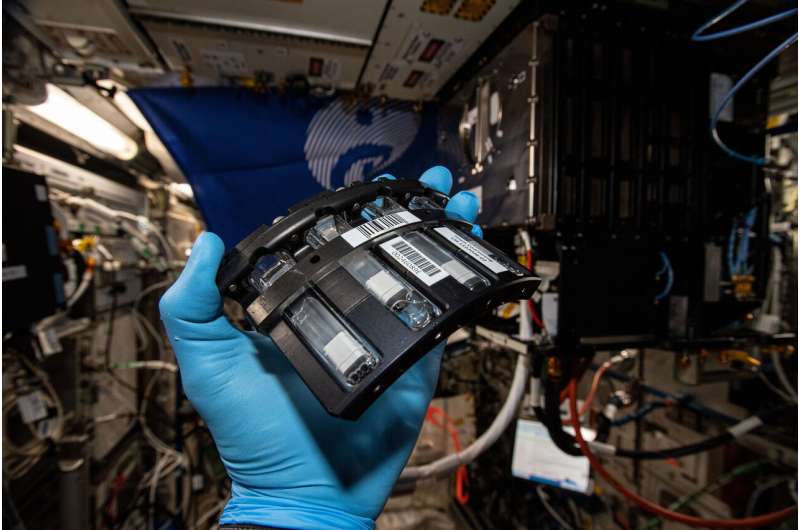Image: The foam-coarsening experiment on the ISS

The foam-coarsening experiment ran a new batch of cartridges in the Fluid Sciences Laboratory of the European Columbus module.
The experiment began in April to study foams in depth under the more stable conditions afforded by microgravity on the International Space Station.
The cell cartridges contain a mixture of soap and water. Bubbles are generated by moving a piston at high speed. The foam is observed for up to 100 hours, during which the foam bubbles become larger but less in number. This process slows down over time so measurements are stopped when five bubbles are formed in each cell section. The results are analysed with laser optics and high-resolution cameras.
The new batch contains the same water and soap mixture but with a difference in the amount of liquid in the cell. Producing foams in a different concentration allows researchers to study how the bubbles enlarge (or coarsen).
What is so special about foam? Besides appearing in your food and drink, foams are also found in sealing products, cosmetics and personal hygiene products, and even construction. They are lighter, offer better insulation and can be just as strong as compact materials.
Observing foams on Earth is tricky because the mixture of gas and liquid that makes up a foam quickly starts to change. Gravity pulls the liquid between the bubbles downwards, and the small bubbles shrink while the larger ones tend to grow at the expense of others. Due to drainage, coarsening (or enlarging) and rupture of the bubbles, a foam starts to collapse back to a liquid state.
But in space foams are more stable because the liquid does not drain in weightlessness. This allows scientists to study the phenomena of a bubble slowly becoming bigger and bursting, which on Earth are masked by the drainage that destabilises the foam.
Deeper insights into the behaviour of foams makes for better applications of its use on Earth. Besides improving food production, foams can also be metallic and have incredible structural characteristics. Aluminium foam, for example, is as strong as pure metal but much lighter. This research can help in the construction of light-weight and sturdy aerospace structures and new shielding systems for diagnostic radiology equipment in hospitals.
The foam-coarsening experiment was developed by Airbus for ESA. The experiment is controlled and data collected by the Belgian User Operations Centre in Brussels, Belgium.
Provided by European Space Agency




















